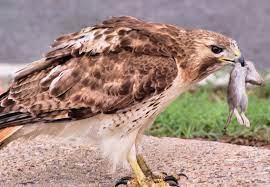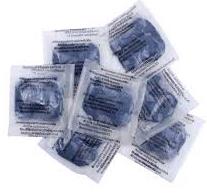 Recently California imposed restrictions on the use of certain anticoagulant rodenticides. This action was taken as a result of mortality among raptors that prey on rodents and indirectly acquire anticoagulant toxicity.
Recently California imposed restrictions on the use of certain anticoagulant rodenticides. This action was taken as a result of mortality among raptors that prey on rodents and indirectly acquire anticoagulant toxicity.
A recent scientific report confirms the prevalence of anticoagulant toxicity in red-tailed hawks in upstate New York. Dr. Cynthia Hopf-Dennis, Clinical Assistant Professor at the Janet L. Swanson Wildlife Hospital conducted a survey on hawks. The population included 23 healthy hawks and 49 birds of the same species that were admitted to the Cornell University Veterinary Hospital. Of 16 liver samples, 11 were positive for anticoagulants. Difethialone was found at six percent of the livers assayed and brodifacoum was found in 62 percent of the livers examined.
The problem with banning anticoagulant rodenticides for use in egg operations is self-evident. Rodents, whether mice or rats, are destructive and are reservoirs and disseminators of pathogens including Salmonella  and Avibacterium and possibly serve as mechanical transmitters of viral infections. From experience it may be assumed that rodents dying within poultry houses as a result of ingesting anticoagulant rodenticides are disposed of in pits, dryers or would be composted depending on the system of manure handling. Rodents that die outside houses obviously represent a danger for raptors and carnivorous mammals.
and Avibacterium and possibly serve as mechanical transmitters of viral infections. From experience it may be assumed that rodents dying within poultry houses as a result of ingesting anticoagulant rodenticides are disposed of in pits, dryers or would be composted depending on the system of manure handling. Rodents that die outside houses obviously represent a danger for raptors and carnivorous mammals.
Hopf-Davis, C. et al. Prevalence of Anticoagulant Rodenticide Exposure in Red-Tailed Hawks (Buteo jamaicensis) and Utility of Clotting Time Assays to Detect Coagulopathy. Ecotoxicology. May 27, 2022. doi10.1007/s 10646-022-02558-y